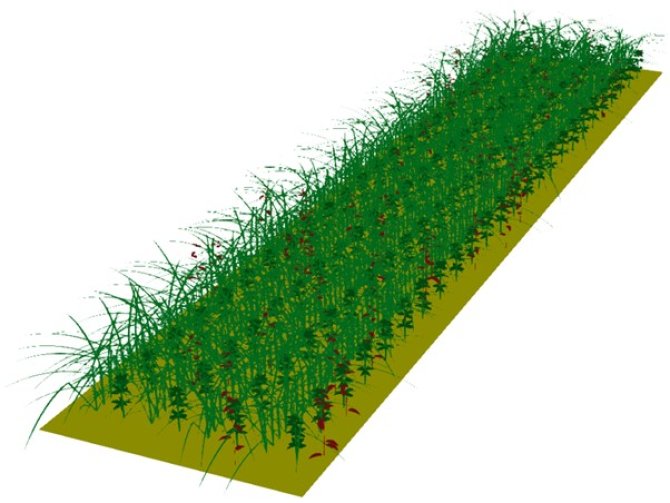
Project
Modelling and quantifying plant traits that contribute to weed suppression in a cereal-legume intercrop
Intercropping is the agricultural practice where two or more crop species are cultivated simultaneously on the same area of land. Intercrop systems potentially have many benefits over sole crop stands, including enhanced weed suppression. The enhanced weed suppression is achieved because crop plants change their behavior in the intercrop to become more competitive for light. This project aims to model intercrop systems in detail and analyse this change in plant behavior and its effect on weed suppression and crop performance.
Project description
Intercropping is the agricultural practice where two or more crop species are cultivated simultaneously within a single season on the same area of land. One of the potential benefits of intercropping is improved weed suppression compared to the average of the monocrops. In a cereal-legume intercrop system, the cereal component crop contributes more to weed suppression than expected from the sole crop stand, which causes this benefit. Through a combination of field experiments and simulation modelling, plant and crop traits that are responsible for this phenomenon can be identified and quantified.
Functional-structural plant (FSP) modelling is an advanced modelling technique that can dynamically simulate plant structures in interaction with the environment to simulate 3D plant growth in space and time. Such a model can accurately capture detailed processes in how plants react to other plants and their environment. Currently, our modelling of plant plasticity in response to its environment needs further development. Understanding the mechanisms responsible for the difference in weed suppressiveness between intercrops and monocrops and the proper implementation in our current FSP model is needed. This will make it possible to identify and quantify plant traits that constitute a good intercrop component crop in terms of weed suppression.
Objectives and methods
The aim of this project is to identify and quantify the plant and crop traits responsible for enhanced weed suppression in intercrops. Data from field experiments of different intercropping systems is available. This data is used to develop and parameterise an FSP model. Data from both the field experiment and FSP model simulations is used for the final analysis. Within this topic it is possible for the student to develop their own research ideas.
Required skills
Basic statistics, FSP modelling. Useful but not required: maximum likelihood estimation, R, Julia.
Types of research / work
FSP modelling (developing plant plasticity responses; simulations of cereal-legume
intercrop systems); data analysis.
Period
September 2023 - February 2024
